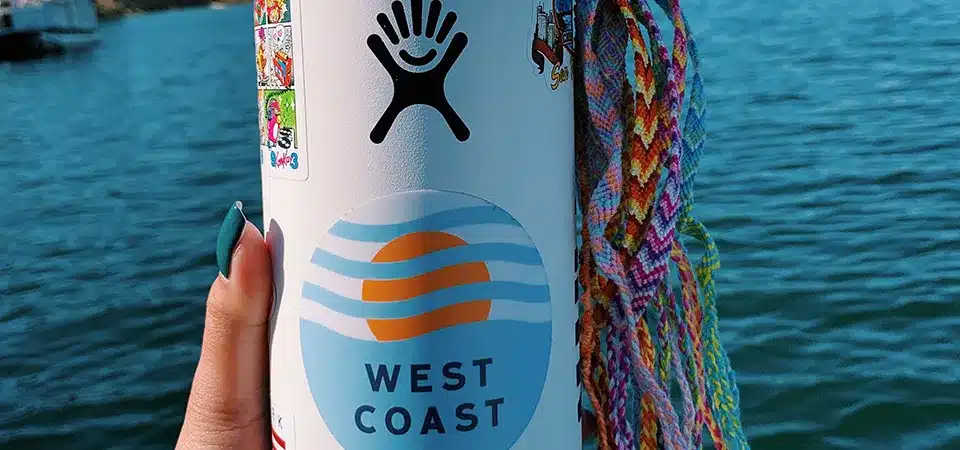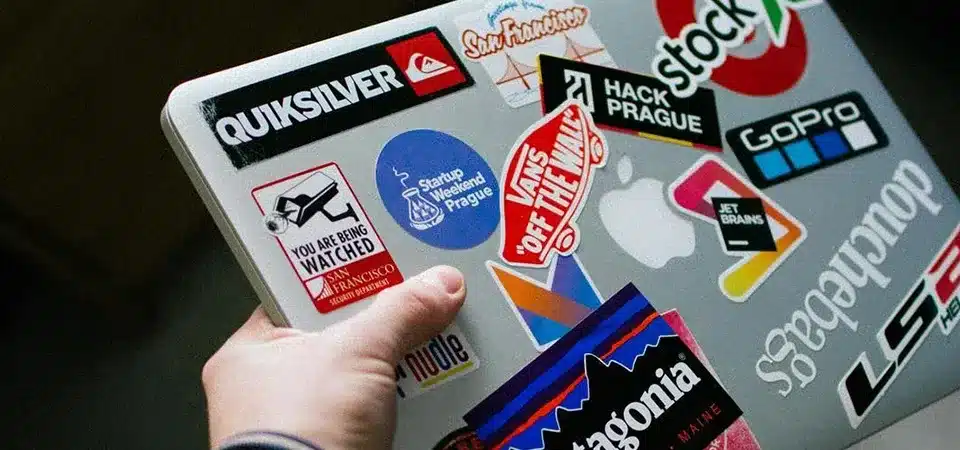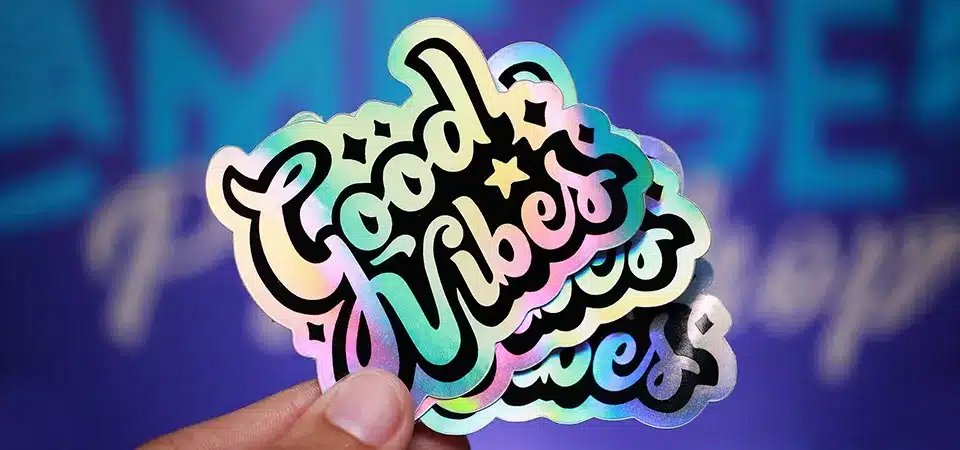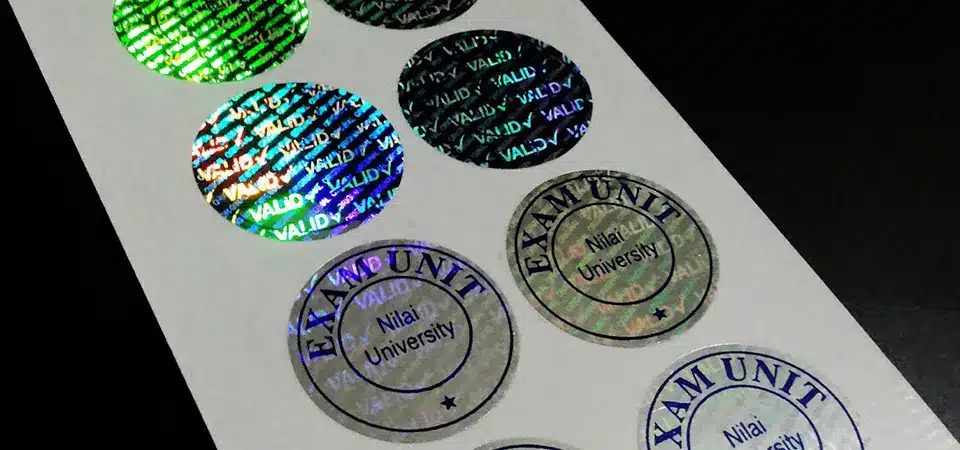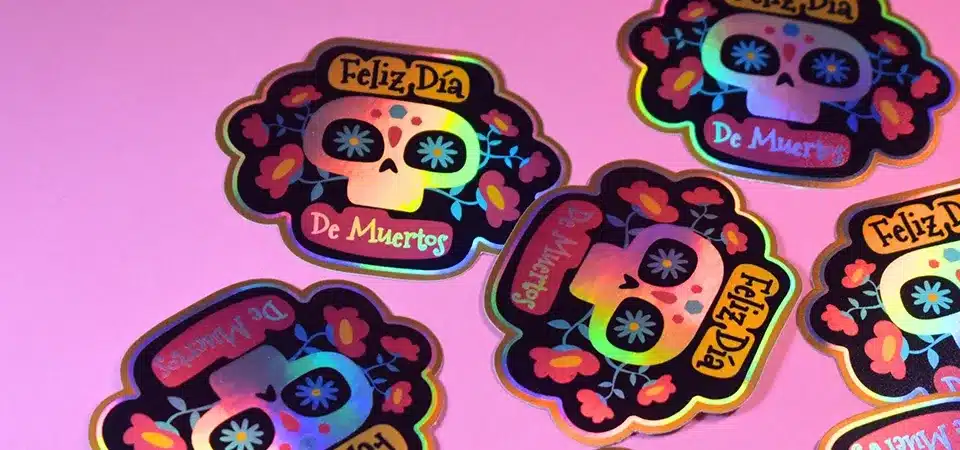Your stickers look great at first, but they peel, fade, or turn into a mushy mess after the first rain. This makes your brand look unprofessional and cheap.
The most common waterproof stickers are made from vinyl, polypropylene, and polyester. These materials are naturally water-repellent. When combined with a protective laminate and a strong, water-resistant adhesive, they become fully waterproof and can withstand rain, washing, and even dishwashers.
As a sticker marketing expert, I see businesses waste money on the wrong stickers all the time. They order something advertised as "water-resistant" for a product that needs to be fully waterproof, and the labels peel off within days. The secret to success is matching the right material, adhesive, and finish to the exact environment where your sticker will live. It’s not complicated once you know what to look for. This guide will walk you through everything, so you can choose stickers that last and keep your brand looking sharp, no matter the weather.
Why Should You Choose Waterproof Stickers?
Your standard stickers look faded and are peeling off your products. This reflects poorly on your brand's quality and wastes your marketing budget on replacements.
You should choose waterproof stickers for their longevity, vibrant appearance, and versatility. They ensure your branding remains intact and professional on products or equipment exposed to moisture, protecting your investment and maintaining brand integrity.
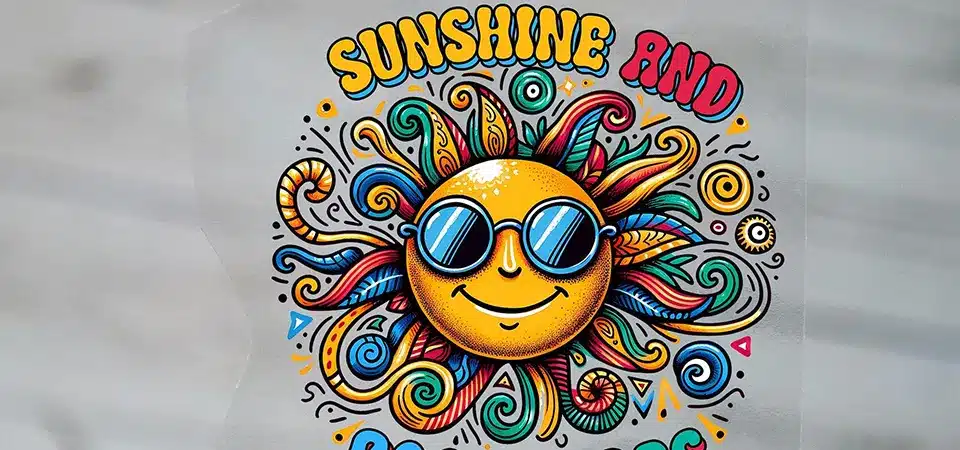
The value of a waterproof sticker goes far beyond just surviving the rain. It is about presenting your brand in the best possible light, consistently. Think about a high-quality water bottle with a peeling paper sticker—it instantly cheapens the entire product. Now imagine that same bottle with a thick, vibrant vinyl sticker that looks perfect even after dozens of washes. That is the power of choosing the right material. In my business, I always tell clients that waterproof stickers aren't a cost; they're an investment in durability. They are essential for any brand that wants to be seen on outdoor gear, beverage bottles, vehicles, or any surface that might get wet. The growing demand for them shows that businesses are realizing that a sticker that lasts is a sticker that works.
What's the Difference Between Waterproof and Water-Resistant?
You see the terms "waterproof" and "water-resistant" but don't know the difference. Choosing the wrong one for your project can lead to peeling labels and a wasted budget.
"Waterproof" means the sticker is impermeable to water and can be fully submerged without damage. "Water-resistant" means it can only repel water for a short time, like from light splashes, but will eventually fail with prolonged exposure.
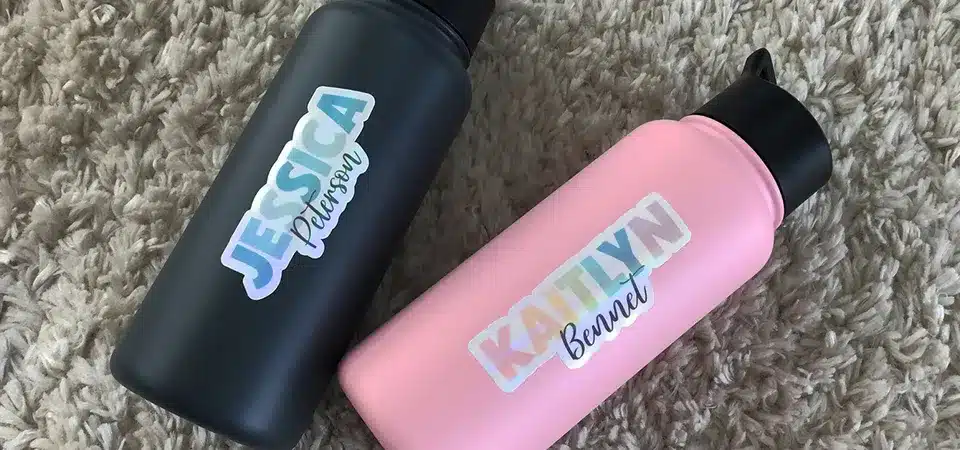
This is the most critical distinction to understand before you order. The difference matters because it determines where your sticker can survive. A "water-resistant" sticker, often made of coated paper, might be fine for a product that gets a quick wipe-down. But for a shampoo bottle in a shower or a logo on a surfboard, you need it to be fully waterproof.
I once helped a new beverage company that was using "water-resistant" paper labels for their iced tea bottles. They looked great at first, but after just a few hours in a cooler full of ice, the labels were sliding off. We switched them to a waterproof polypropylene material, and the problem was solved. Their brand image was saved.
Here’s a simple breakdown:
| Feature | Waterproof | Water-Resistant |
|---|---|---|
| Material | Vinyl, Polypropylene, Polyester | Coated Paper, some basic plastics |
| Exposure | Can be fully submerged in water | Resists light splashes, humidity, and drips |
| Use Case | Water bottles, cars, boats, bath products | Shipping labels, indoor products not in wet areas |
Always clarify your exact needs with your sticker provider. If it's going to get soaked, you must ask for "waterproof."
Which Materials Are Used in Waterproof Stickers?
You know you need waterproof stickers, but you're not sure what they're made of. Ordering without knowing the materials could mean you get something that doesn't last.
The best materials for waterproof stickers are vinyl, polypropylene (PP), and polyester (PET). These plastics are non-porous and durable. A protective laminate is then added on top to seal the ink and provide maximum protection.
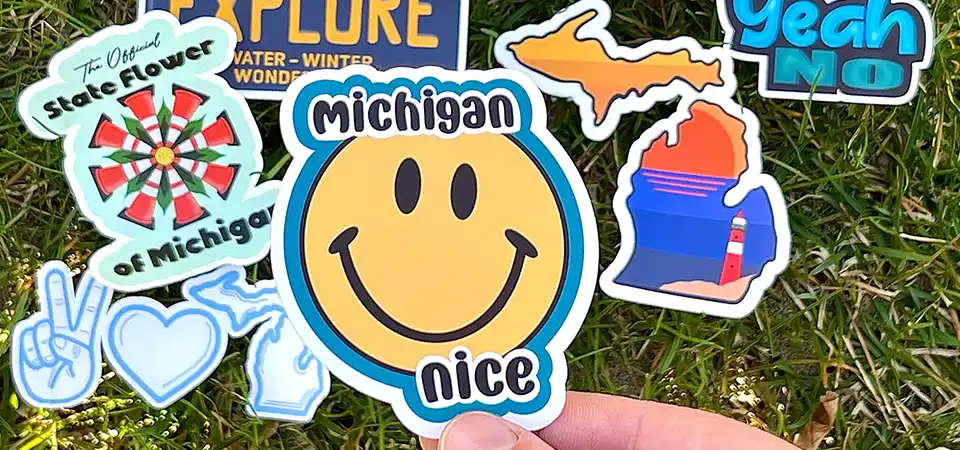
The material is the foundation of a good waterproof sticker. In my print shop, we use a few core materials that have proven to be the most reliable for our clients. Each one has its own strengths.
Key Waterproof Materials
- Vinyl: This is the #1 choice for most waterproof applications. It's thick, durable, and flexible, making it the gold standard for outdoor use on cars, windows, and sports equipment. It prints with amazing color and feels very high-quality.
- Polypropylene (PP): This is a bit thinner and more rigid than vinyl. It's a great, cost-effective option for product packaging, especially for food and cosmetics. It holds up well against water and oils but is best for moderate outdoor use, not extreme conditions.
- Polyester (PET): This is a high-end, premium material. Polyester is incredibly strong and can handle extreme temperatures, harsh chemicals, and serious abrasion. We use it for industrial labels, warning stickers on machinery, and high-end electronics.
The Role of Laminates
The material itself is waterproof, but the printed ink is not. A laminate is a thin, clear layer of plastic applied over the printed sticker. It acts like a shield, making the sticker truly waterproof while also protecting it from scratches and UV rays that cause fading.
What Types of Waterproof Stickers Are Available?
You hear "vinyl sticker" but don't realize how many options you have. You might be missing out on a unique look that could make your brand stand out from the crowd.
The most popular types are opaque white vinyl and subtle clear vinyl. You can also choose between removable or permanent adhesives. Beyond that, specialty options like holographic, reflective, and freezer-grade stickers are also fully waterproof.
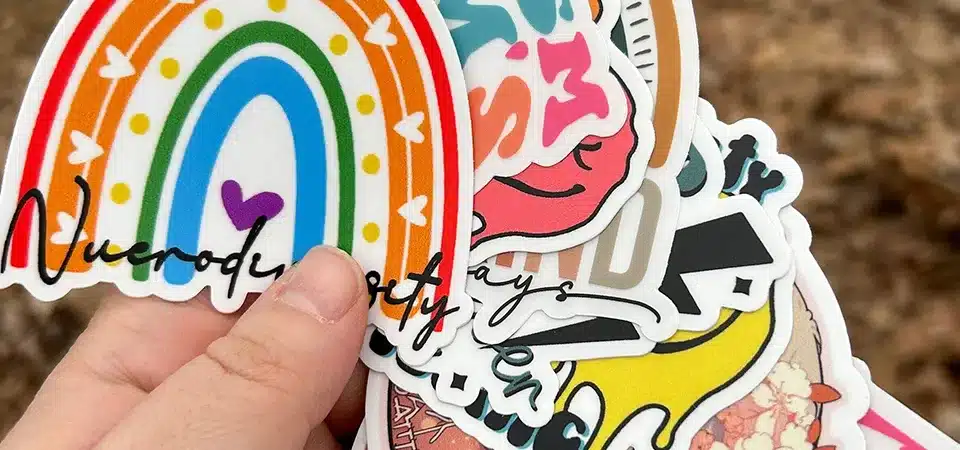
Once you've chosen your base material—usually vinyl—you can explore a whole range of styles. The "type" of sticker is really about the look and the adhesive. Helping clients pick the perfect combination is one of my favorite parts of the job.
- White Vinyl Stickers: This is the most popular option by far. The white base makes colors pop, and the sticker is fully opaque, so it looks great on any surface.
- Clear Vinyl Stickers: These are perfect when you want your design to stand out without a solid background. They create a sleek, "no-label" look and are ideal for glass, windows, or any smooth surface where you want the underlying material to show through.
- Removable vs. Permanent: The adhesive is just as important as the vinyl. A permanent adhesive is designed to last for years. A removable adhesive will stick well but can be peeled off cleanly within a few months, making it great for temporary promotions.
You can also get specialty waterproof stickers for a really unique look. We can print on holographic material that shimmers with rainbow colors, reflective vinyl for safety stickers, or even industrial-grade stickers made to survive freezers and harsh chemicals.
What Printing Methods Are Best for Waterproofing?
Your design looks great on screen, but you worry the ink will run or fade. Choosing the wrong printing method can ruin even the best waterproof material.
Digital printing is best for quality and flexibility, while screen printing offers durability for simple, bold designs. However, the most critical step for waterproofing is adding a UV coating or laminate after printing to seal and protect the ink from water and fading.
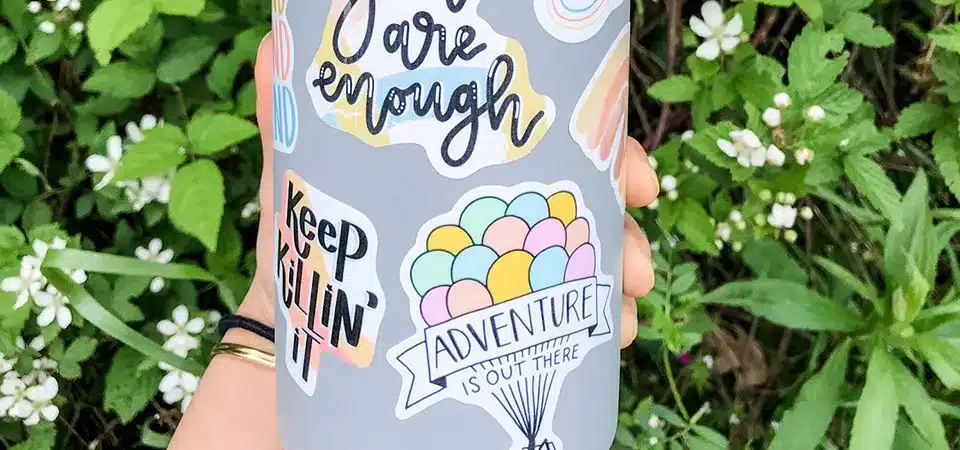
The printing method itself doesn't make a sticker waterproof, but it's essential for quality and durability. The real waterproofing hero is the protective finish applied after printing. It’s a two-step process.
Step 1: Printing the Design
- Digital Printing: This is what we use for most custom sticker orders in my shop. It works like a very high-end desktop printer, producing photo-quality images with unlimited colors. It's perfect for complex designs and small to medium-sized orders because there's almost no setup cost.
- Screen Printing: This method pushes ink through a mesh screen. It's better for simple designs with one or two bold colors and is extremely cost-effective for very large bulk orders. The ink layer is thick and durable.
Step 2: Protecting the Ink
No matter how it's printed, the ink needs protection. This is where the magic happens. After the design is on the vinyl, we add a clear top layer.
- UV Coating / Lamination: This is the most important step. We apply a thin, clear layer of vinyl laminate over the entire printed sheet. This laminate seals the ink completely, making the sticker 100% waterproof and scratch-resistant. It also protects the colors from fading in the sun.
Always ask your sticker provider if they use a laminate. Without it, your sticker's ink is exposed to the elements.
How Long Do Waterproof Stickers Last?
You're investing in waterproof stickers, but you need to know if they'll last for years or just a few months. Understanding their lifespan helps you set the right expectations.
High-quality waterproof vinyl stickers typically last for 3 to 5 years outdoors. Indoors, their lifespan is almost permanent. The key factors that affect durability are UV exposure from the sun, abrasion, and exposure to harsh chemicals.
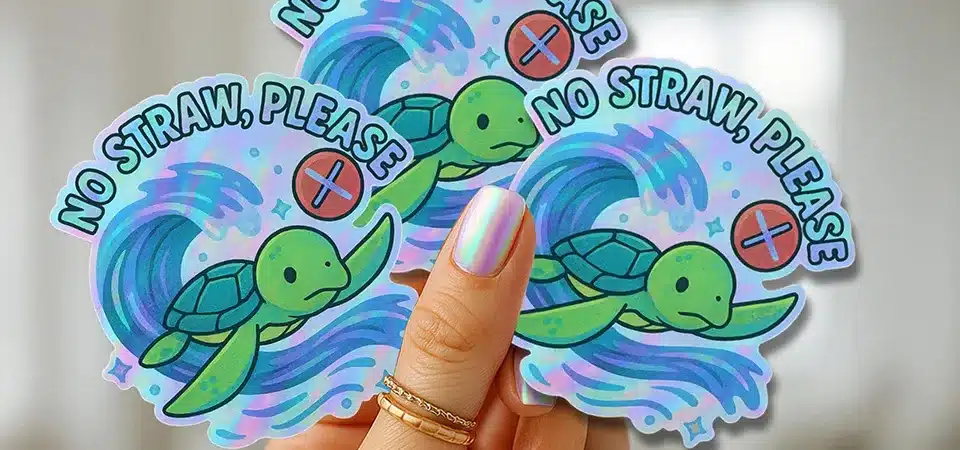
This is a question I get from almost every client. The answer always depends on where the sticker will live. A sticker on a laptop that stays inside will look perfect for a decade. A sticker on a car bumper in a sunny climate has a much tougher job.
Outdoor Lifespan (3-5 Years)
When a sticker is outdoors, its biggest enemy is the sun.
- UV Exposure: Direct sunlight will eventually cause colors to fade. That's why we use a UV-protective laminate, which acts like sunscreen for your sticker and is crucial for extending its life.
- Abrasion: Will the sticker be rubbed against things? A sticker on a kayak that's constantly being loaded and unloaded will wear faster than one on a stationary sign.
- Chemical Exposure: Contact with gasoline, solvents, or harsh cleaning agents can damage the vinyl and adhesive over time.
Indoor Lifespan (5+ Years)
Indoors, stickers are protected from the sun and harsh weather. Because of this, they last much longer. A waterproof sticker on a product, a window, or a piece of equipment indoors will typically outlast the object it's stuck to. Unless it is physically peeled off or scratched repeatedly, it can be considered almost permanent.
Where and How Are Waterproof Stickers Used?
You know waterproof stickers are durable, but you're looking for practical ideas. You might be missing key opportunities to use them for your business or project.
Waterproof stickers are widely used on cars, boats, and outdoor equipment for branding. They are essential for product packaging like beverage bottles and cosmetics. Businesses also use them on storefront windows, in industrial settings, and for food packaging.

Because they are so durable, the applications for waterproof stickers are almost endless. I'm constantly amazed by the creative ways my clients use them. Here are some of the most common and effective uses I see in my shop.
- Vehicles and Outdoor Equipment: This is a huge category. Think logos on company vans, branding on motorcycles and boats, and safety warnings on outdoor machinery. The vinyl needs to withstand sun, rain, and dirt.
- Product Packaging: Any product that might get wet needs a waterproof label. This includes shampoo and conditioner bottles, beer and wine bottles, food jars that go in the fridge, and cosmetic products stored in a humid bathroom.
- Windows and Storefronts: Stickers on a glass door or window need to survive cleaning and all types of weather. They are perfect for displaying business hours, logos, or QR codes directing customers to a website.
- Special Environments: Some stickers have very demanding jobs. We make freezer-safe stickers for food packaging that stay stuck at low temperatures. We also create industrial-grade polyester labels for labs and factories that need to resist chemicals and high heat.
What Are the Best Tips for Applying Waterproof Stickers?
Your waterproof sticker peeled off after just a few weeks. This is frustrating and usually happens because the surface wasn't prepared correctly before application.
For a truly waterproof seal, the surface must be perfectly clean, dry, and free of oil. Apply the sticker slowly with a squeegee, pressing from the center outwards to remove all air bubbles and ensure full adhesive contact.
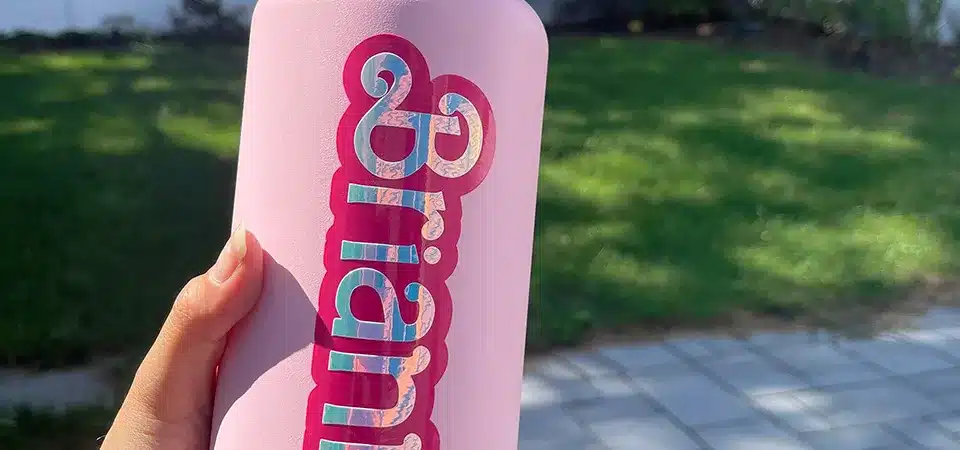
The best waterproof sticker in the world will fail if it's applied improperly. Proper application is just as important as the sticker material itself. Following these steps will ensure your sticker stays put for years.
1. Surface Preparation is Key
This is the most important step. First, wash the area with soap and water to remove any visible dirt, then dry it completely. After that, wipe the surface down with isopropyl (rubbing) alcohol and a clean cloth. The alcohol removes any invisible oils, waxes, or residues that can prevent the adhesive from making a strong bond. The surface must be 100% dry before you apply the sticker.
2. Application Technique
For any sticker larger than your hand, don't just peel and stick.
- Use a plastic squeegee (your sticker provider should offer one).
- Start by pressing down in the center of the sticker.
- Work your way to the edges with firm, overlapping strokes. This pushes any trapped air bubbles out to the sides.
- If you're applying to a curved surface, a little bit of heat from a hairdryer can help make the vinyl more flexible.
3. Common Pitfalls to Avoid
Don't apply stickers in extreme temperatures. If the surface is too hot or too cold, the adhesive won't cure correctly. Also, be patient—it takes the adhesive 24-48 hours to fully bond with the surface. Avoid washing the area for a few days.
FAQs
You still have a few questions before you're ready to order. You're wondering about the application process, finish options, and if the stickers are truly dishwasher safe.
No, you cannot apply stickers when the surface is wet. Both matte and gloss finishes are equally waterproof. And yes, many vinyl stickers are dishwasher safe, but it depends on the specific material and adhesive used.
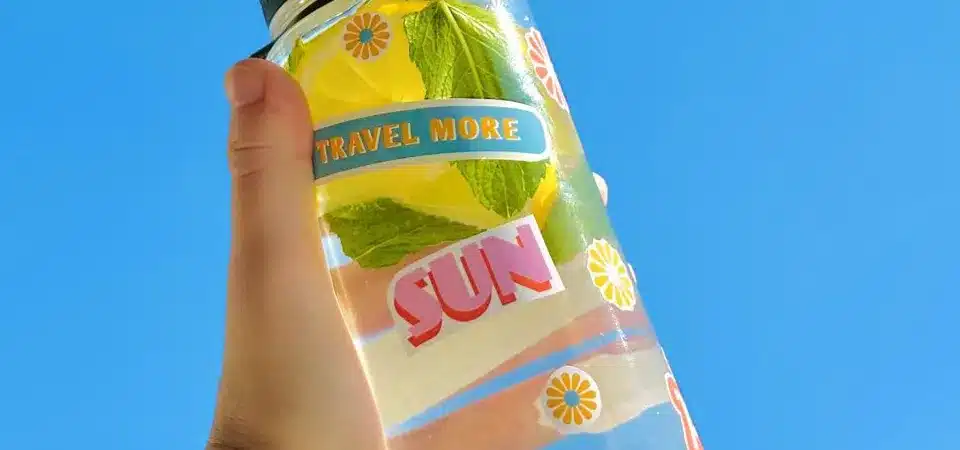
I answer these questions every day in my business. Getting clear answers helps you make the right choice and feel confident in your purchase. Here are some of the most frequently asked questions.
-
Can you use a "wet application" method?
Generally, no. The surface must be completely dry for the adhesive to bond properly. Wet application is a special technique used by professionals for very large decals, and it's not recommended for standard stickers. -
Is a glossy or matte finish better for waterproofing?
The finish doesn't affect the waterproofing. Both glossy and matte finishes are created by the laminate that is applied over the printed design. This laminate provides the waterproof seal. The choice is purely aesthetic: gloss gives you a shiny, vibrant look, while matte offers a modern, non-glare finish. -
How do you remove a waterproof sticker?
For permanent vinyl stickers, you'll need to use gentle heat from a hairdryer to soften the adhesive. Once it's warm, you should be able to slowly peel a corner up and pull it off. You can use a citrus-based cleaner like Goo Gone to remove any leftover sticky residue. -
Are they dishwasher and microwave safe?
Many of our waterproof vinyl stickers are dishwasher safe, making them perfect for water bottles and mugs. However, they are generally not microwave safe because some materials may contain trace metallic elements. Always confirm with your sticker provider.
How Do You Choose the Right Waterproof Sticker?
You're ready to buy, but you're overwhelmed by all the options. You don't want to make a costly mistake by picking the wrong material or finish for your specific needs.
Assess your sticker's environment (indoor/outdoor, sun exposure), the surface it's sticking to (glass, plastic, metal), and the desired lifespan. Then, discuss these factors with your sticker provider to choose the best material, adhesive, and finish.
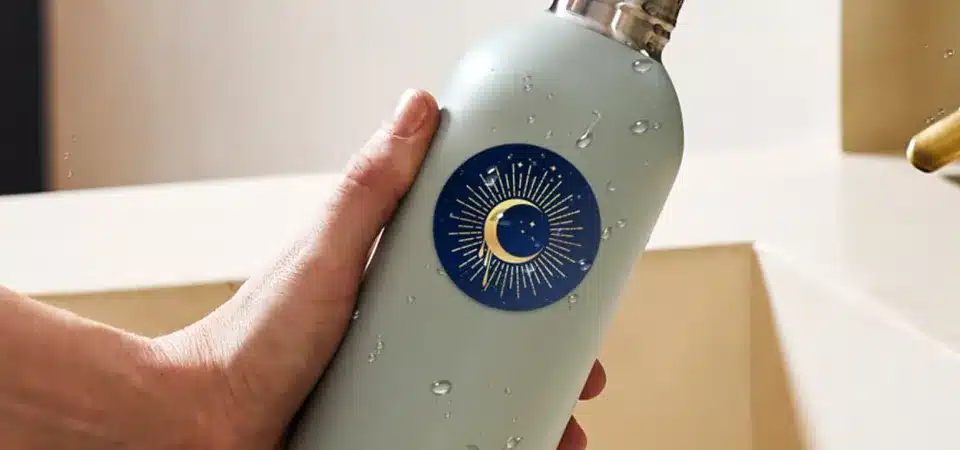
Choosing the perfect sticker is a process of asking the right questions. As an expert, my job is to walk clients through these questions to make sure they get exactly what they need. You can do the same thing to ensure you make the right choice.
Ask Yourself These Three Questions:
- Where will the sticker live? Will it be indoors or outdoors? Will it be exposed to direct sunlight, harsh chemicals, or extreme temperatures? An outdoor sticker needs a UV laminate, while a freezer sticker needs a special cold-temperature adhesive.
- What surface will it stick to? Is the surface smooth and flat like glass, or is it a textured plastic? Is it a rigid object or something flexible? This will determine the best type of vinyl and adhesive.
- How long does it need to last? Are you creating a permanent product label that needs to last for years, or is this for a short-term promotion that only needs to stick for a few months? This will help you decide between a permanent and a removable adhesive.
What to Ask Your Sticker Provider
Once you know your needs, talk to your printer. Ask them: "Based on my needs, what material, adhesive, and finish do you recommend?" A good provider will give you a clear recommendation and explain why it's the best option for your project.
What Are Some Expert Tips for Getting Custom Stickers Made?
You're ready to place an order, but you're worried about the technical details. Preparing artwork and understanding cut options can feel intimidating if you've never done it before.
For the best results, provide your printer with high-resolution, print-ready artwork (like a vector PDF). Understand the difference between die-cut and kiss-cut, and always review and approve the digital proof before they start printing.
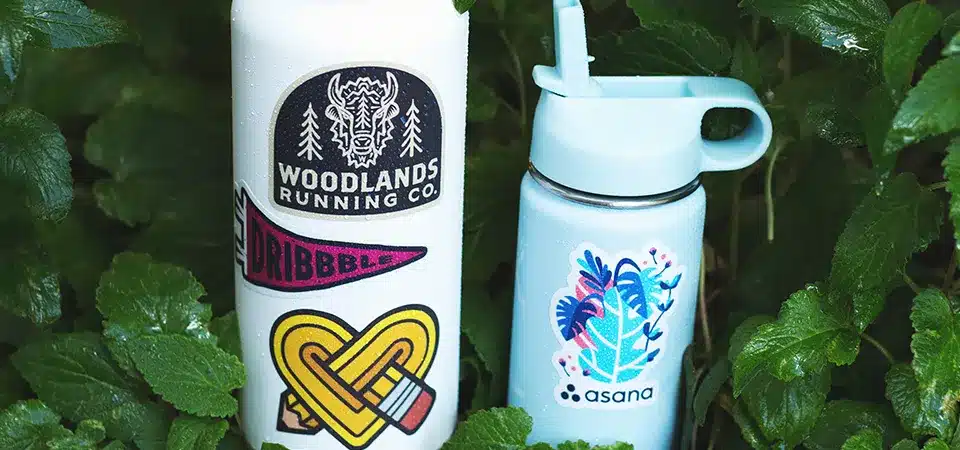
As someone who handles hundreds of custom orders, I can tell you that a little bit of preparation on your end makes the whole process smoother and ensures you get a final product you love. Here are my top tips for anyone ordering custom stickers for the first time.
Prepare Your Artwork: The quality of your sticker depends on the quality of your file. For logos and illustrations, a vector file (with an .AI, .PDF, or .SVG extension) is always best because it can be resized without losing quality. If you only have a pixel-based image (like a .PNG or .JPEG), make sure it is at a high resolution of at least 300 DPI (dots per inch) at the size you want it printed.
- Die-Cut: The sticker and its backing are cut to the exact shape of your design. This creates a beautifully shaped, individual sticker that is great for handouts.
- Kiss-Cut: Only the vinyl layer is cut to your design's shape, leaving the square backing intact. This makes the sticker easier to peel and protects delicate edges.
Always Approve the Proof: Before we print, we will send you a digital proof. This is an image showing exactly how your final sticker will look, including the colors and the cut line. Check it carefully for any mistakes. This is your last chance to make changes before production begins!
Conclusion
Choosing the right waterproof sticker boils down to matching the material, adhesive, and finish to your specific need. With vinyl or polyester, you get a durable product that keeps your brand looking professional.

